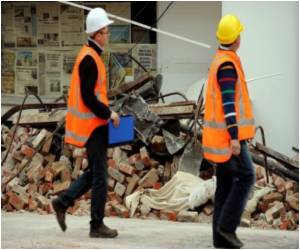A recent research provides new means for replicating how earth ruptures develop and possibly enabling prediction of future earthquakes.

For centuries, physicists have thought that the amount of force needed to push an object in order to make it slide across a surface is determined by a number called the coefficient of friction, which is the ratio between the forces pushing sideways and pushing down (basically, how much the object weighs).
In carefully controlled lab experiments, Ben-David found that points along the contact surface could sustain up to five times as much sideways force as the coefficient of friction predicted, and the object still wouldn't budge.
Furthermore, the contacts don't all break at the same time. They, instead rupture one after another in a cadence that sets the rupture speed. These rapidly moving ruptures are close cousins of earthquakes, Fineberg said.
"An earthquake is the same system as in the Hebrew University experiments, just scaled up by factors of thousands. We can watch how these things unfold in the lab and measure all of the variables that might be actually relevant in a way that you could never observe under the earth," noted Fineberg.
This new understanding has the potential to provide unprecedented predictive power, estimating both the rupture mode and extent of a future earthquake.
Advertisement
Source-ANI









